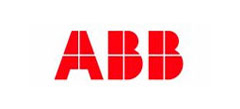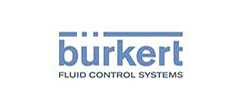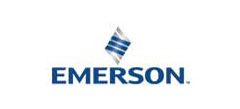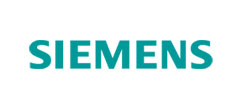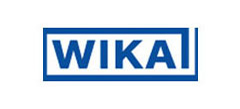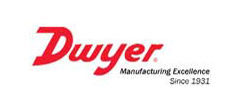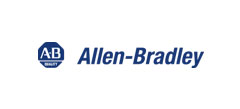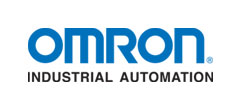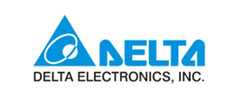- Capable of measuring difficult handling fluids
- Independent of density changes, flow profile and flow turbulence. Hence straight lengths are not required.
- No routine maintenance required since no moving parts
- High accuracy
Flow Measuring Instruments
Flow Measuring Instruments
A reliable source for Flowmeter information and leading Flowmeter Companies & Supplier. Looking for flowmeters? We have various type of Flow Meters in our product range. We have Mechanical Flow Meters as well as Digital Flow Meters.
Coriolis Flow Meter
The basic operation of Coriolis flow meters is based on the principles of motion mechanics. As fluid moves through a vibrating tube it is forced to accelerate as it moves toward the point of peak-amplitude vibration. Conversely, decelerating fluid moves away from the point of peak amplitude as it exits the tube. The result is a twisting reaction of the flow tube during flowing conditions as it traverses each vibration cycle.
ACoriolis meter is based on the principles of motion mechanics. When the process fluid enters the sensor, it is split. During operation, a drive coil stimulates the tubes to oscillate in opposition at the natural resonant frequency. As the tubes oscillate, the voltage generated from each pickoff creates a sine wave. This indicates the motion of one tube relative to the other. The time delay between the two sine waves is called Delta-T, which is directly proportional to the mass flow rate.

Coriolis Flow Meter
The industries in order of higher to lower are chemical, oil and gas, food and beverage, pharmaceutical, pulp and paper, power, metals and mining, and water and wastewater followed by all others in small amounts
Magnetic Flow meters
Electromagnetic flowmeters have been used throughout industries for more than 60 years. These meters are applicable for all conductive liquids, such as water, acids, alkalis, slurries and many others. Typical applications are monitoring of liquids, filling, dosing and precise measurement in custody transfer. The two million magmeters weŌĆÖve sold since 1977 need no maintenance and offer seamless system integration into your processes.
In the industrial environment, electromagnetic flowmeters are primarily used in water management and in the processing, life sciences and food industries. In tunnel construction and mining, robust magmeters are often the only option for measuring highly abrasive ore slurries with entrained solids, sand-water mixtures, filler materials or bulk solids with the required accuracy.

Magnetic Flow meters
- The electromagnetic flow meter provides rapid response to flow changes.
- It provides linear wide range.
- Measuring range setting can be optimized.
- It has ability to measure reverse flow.
- No additional pressure drops.
- No obstruction is created to flow.
- It is mainly suitable for hydraulic solid transport.
- It is unaffected by changes in temperature, density, viscosity, concentration and electrical conductivity.
In order of usage, water/wastewater industry, chemical, food and beverage, oil and gas (although not for oil and gas fluids but in support of the processes), power, pulp and paper, metals and mining, and pharmaceutical.
Insertion Electromagnetic
Insertion Type Electromagnetic Flow Meter is an Ideal solution for water flow measurements in large diameter pipes. Most economical as compared to its counterpart in full bore measurement or ultrasonic measurement. Insertion Type Electromagnetic Flow Meter is an Ideal solution for water flow measurements in large diameter pipes

Insertion Electromagnetic
- Excellent long term zero stability using pulsed dc magnetisation and auto zero technique.
- Measurement results are independent of density, viscosity, pressure, temperature, solid-impurities and conductivity variations (above 20 ┬ĄS/cm )
- No additional pressure drop across the meter.
- Compatible with virtually all corrosive / non-corrosive liquids.
Water Supply, Public Services & Utilities, Effluent Treatment Plants, Pharmaceutical Industries, Sugar Industries & Distilleries, Food & Drugs
Ultrasonic Flow Meter
Ultrasonic flowmeters are commonly applied to measure the velocity of liquids that allow ultrasonic waves to pass, such as water, molten sulfur, cryogenic liquids, and chemicals. Transit time designs are also available to measure gas and vapor flow. Be careful because fluids that do not pass ultrasonic energy, such as many types of slurry, limit the penetration of ultrasonic waves into the fluid. In Doppler ultrasonic flowmeters, opaque fluids can limit ultrasonic wave penetration too near the pipe wall, which can degrade accuracy and/or cause the flowmeter to fail to measure. Transit time ultrasonic flowmeters can fail to operate when an opaque fluid weakens the ultrasonic wave to such an extent that the wave does not reach the receiver.

Ultrasonic Flow Meter
- High Accuracy
- Approved for custody transfer
- High turndown/rangeability measure low and high pressure
- Repeatable
- Can clamp on pipe with no penetration
- Tolerate extreme temperature
- Long term reliability
- No moving parts to replace or lubricate.So low maintenance cost
In order of usage, water/wastewater industry, chemical, food and beverage, oil and gas (although not for oil and gas fluids but in support of the processes), power, pulp and paper, metals and mining, and pharmaceutical.
Portable Ultrasonic Flowmeter
Ultrasonic flowmeters are commonly applied to measure the velocity of liquids that allow ultrasonic waves to pass, such as water, molten sulfur, cryogenic liquids, and chemicals. Transit time designs are also available to measure gas and vapor flow. Be careful because fluids that do not pass ultrasonic energy, such as many types of slurry, limit the penetration of ultrasonic waves into the fluid. In Doppler ultrasonic flowmeters, opaque fluids can limit ultrasonic wave penetration too near the pipe wall, which can degrade accuracy and/or cause the flowmeter to fail to measure. Transit time ultrasonic flowmeters can fail to operate when an opaque fluid weakens the ultrasonic wave to such an extent that the wave does not reach the receiver. Portable Ultrasonic Flowmters are east to use and as the name implies, can be used in multiple locations. this can be useful where the flow of tghe multiple lines has to measured one after another. Many Portable ones also have memory card provision so that the measures data can be stored.

Portable Ultrasonic Flowmeter
- Very accurate measurements
- Non- downtime to install
- Less maintenance
- Improved sensor technology
- Permanent and portable models
- Use for both drinking water and wastewater measurements
In order of usage, water/wastewater industry, chemical, food and beverage, oil and gas (although not for oil and gas fluids but in support of the processes), power, pulp and paper, metals and mining, and pharmaceutical.
Orifice Plate Flow Meter
An Orifice Meter is basically a type of flow meter used to measure the rate of flow of Liquid or Gas, especially Steam, using the Differential Pressure Measurement principle. It is mainly used for robust applications as it is known for its durability and is very economical. As the name implies, it consists of an Orifice Plate which is the basic element of the instrument. When this Orifice Plate is placed in a line, a differential pressure is developed across the Orifice Plate. This pressure drop is linear and is in direct proportion to the flow-rate of the liquid or gas. Since there is a drop in pressure, just like Turbine Flow meter, hence it is used where a drop in pressure or head loss is permissible.

Orifice Plate Flow Meter
- The Orifice meter is very cheap as compared to other types of flow meters.
- Less space is required to Install and hence ideal for space constrained applications
- Operational response can be designed with perfection.
- Installation direction possibilities: Vertical / Horizontal / Inclined.
Natural Gas, Water Treatment Plants, Oil Filtration Plants, Petrochemicals and Refineries
Vortex Flow Meter
Vortex flow meters offer many advantages for flow measurement including easy installation without impulse lines, no moving parts to maintain or repair, less leak potential and a wide flow turndown range. Vortex meters also offer very low power consumption, allowing for use in remote areas. Additionally, Vortex meters are unique in that they can accommodate liquids, gasses, steam and corrosive applications. Vortex flow meters are also able to withstand high process pressures and temperatures

Vortex Flow Meter
- There are no moving parts that are vulnerable to wear
- Maintenance is not required on a regular basis
- Liquid, gas and stream all can be measured using the vortex flow meter
- Reliability
- Long term accuracy
- Cost of installation is also less for the vortex flow meter
- The flow meter is available in many temperature ranges
- Available in wide variety of pipe sizes
Measuring the flow of liquid suspension, Higher viscosity fluid, Stream measurement, Water application, Chilled water, Hot water, Water and glycol mixtures, Condensate measurement, Portable water, Solvents, Acids, Ultra pure water, De-ionized water
Turbine Flow Meter
Turbine flow meters have moving parts that are subject to degradation with time and use. Abrupt transitions from gas flowmeter applications to liquid flowmeter use should be avoided because they can mechanically stress the flowmeter, degrade accuracy, and/or damage the flow meter. These conditions generally occur when filling the pipe and under slug flow conditions. Using the turbine flow meter for two-phase flow conditions such as steam flow metering applications can also cause a turbine flow meter to measure inaccurately.
A turbine flow meter measures the velocity of liquids, gases and vapors in pipes, such as hydrocarbons in fuel flow measurement, chemical flow metering, water flow metering, cryogenic liquid flow metering, air or gas flow metering, and general industrial flow metering. High accuracy turbine flowmeters are available for custody transfer of hydrocarbons and natural gas. A mass flow computer is often used in custody-transfer applications to correct for pressure, temperature and fluid properties in order to achieve the desired accuracy. Other low viscosity applications are tap and demineralized water, fuel flow meter solvents, and pharmaceutical fluids
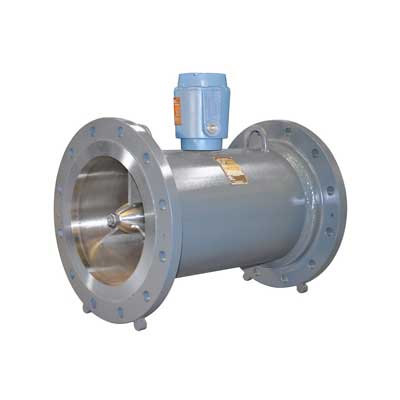
Turbine Flow Meter
- The plot of the volumetric flow is continuous since the turbine is constantly rotating with a speed. Of course, it would be zero if the flow stops as well. Repeatability is a highly desirable factor in any flow meter
- The rate of response for a turbine flow meter is quite fast (down to about a quarter of a second)
- Accuracy is very good (about ┬▒0.25%)
- Rugged nature of the flow meter, allowing for daily usage
- Modifiable to take into consideration various extra features like temperature compensation, viscosity and effects of density
In order of magnitude from largest to smallest, these are used in oil and gas, water and wastewater, gas utility, chemical, power, food and beverage, aerospace, pharmaceutical, metals and mining, and pulp and paper.
Gas Mass Flow Meter
Gas Mass Flow Meters combine a straight tube sensor with a restrictor flow element to provide high accuracy and repeatability. Flow rates are virtually unaffected by temperature and pressure variations. Actual gas flow is displayed in engineering units on a 3-1/2 digit, 90┬░ tiltable LCD readout. Units can be used with Series GFT Flow Totalizer for applications requiring totalization.Thermal mass flow meters measure the mass flowrate of gases and liquids directly. Volumetric measurements are affected by all ambient and process conditions that influence unit volume or indirectly affect pressure drop, while mass flow measurement is unaffected by changes in viscosity, density, temperature, or pressure.

Gas Mass Flow Meter
- Capable of measuring difficult handling fluids
- Independent of density changes, flow profile and flow turbulence. Hence straight lengths are not required.
- No routine maintenance required since no moving parts
- High accuracy
The industries in order of higher to lower are chemical, oil and gas, food and beverage, pharmaceutical, pulp and paper, power, metals and mining, and water and wastewater followed by all others in small amounts
Paddlewheel, Adjustable Insertion
Rotating paddle sensors with electrical transmission output for remote indication of liquid flow rate. Adjustable insertion length models are available. Used to monitor liquid flow rates in pipes. Applications include irrigation, cooling systems, and leak detection. Non-Magnetic Sensing, Adjustable for 1-1/2 to 40" (38.1 to 1016 mm) Pipe, Pulse or 4 to 20 mA The Insertion Paddlewheel Flowmeters are used to monitor liquid flow rates in pipes from 1-1/2 to 40" and is available in brass or 316 SS body. The unit outputs a frequency proportional pulsed or 4 to 20 mA output. The pulse models are a square wave output signal with frequency proportional to the flow velocity and the 4 to 20 mA models have a linear output of the velocity with 4 mA equal to 0 ft/s and 20 mA equal to 25 ft/s.

Paddlewheel, Adjustable Insertion
- Bearings and shaft offer excellent wear protection even in applications with particulate for long life
- Weatherproof and submersible rated for irrigation applications
- One unit adjustable over a large pipe size range
- Multiple wetted material choices offer application versatility
- Integral 4 to 20 mA output with no need for additional external components
- Sensor technology uses inductive sensing to sense the blades of the impeller therefor does not use magnets allowing low flow rate monitoring with no concerns regarding magnetic material in the flow
Process Flow Monitoring, Pump Protection, Pure Water Production, Filtration Systems, Chemical Production, Reverse Osmosis, Demineralization/Regeneration, Fume Scrubbers, Cooling Towers
Variable Area Flowmeter
Variable area flow meters are simple and versatile devices that operate at a relatively constant pressure drop and measure the flow of liquids, gases, and steam. The position of their float, piston or vane is changed as the increasing flow rate opens a larger flow area to pass the flowing fluid. The position of the float, piston or vane provides a direct visual indication of flow rate. Design variations include the rotameter (a float in a tapered tube), orifice/rotameter combination (bypass rotameter), open-channel variable gate, tapered plug, and vane or piston designs.
Either the force of gravity or a spring is used to return the flow element to its resting position when the flow lessens. Gravity-operated meters (rotameters) must be installed in a vertical position, whereas spring operated ones can be mounted in any position. All variable area flow meters are available with local indicators. Most can also be provided with position sensors and transmitters (pneumatic, electronic, digital, or fiberoptic) for connecting to remote displays or controls.

Variable Area Flowmeter
- Reasonably priced,simple construction
- No auxiliary energy necessary
- Suitable for liquids and gases
- No in and outlet straight length necessary
- Assembly and maintenance friendly
- Available with contact or current exit
Process Flow Monitoring, Pump Protection, Pure Water Production, Filtration Systems, Chemical Production, Reverse Osmosis, Demineralization/Regeneration, Fume Scrubbers, Cooling Towers


